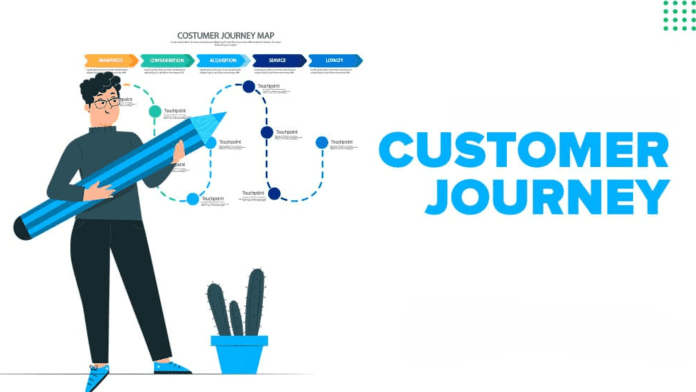In the fast-paced landscape of modern business, understanding and meeting customer expectations is paramount. As companies strive to differentiate themselves in a crowded marketplace, one strategy has emerged as a powerful tool for enhancing customer experience: journey mapping. This innovative approach allows businesses to walk in their customers’ shoes, gaining invaluable insights and fostering a deeper connection with their target audience.
The Essence of Journey Mapping
Journey mapping is more than just a buzzword; it’s a strategic process that involves visualizing and understanding the end-to-end experience a customer has with a product or service. This comprehensive approach enables businesses to identify pain points, moments of delight, and critical touchpoints throughout the customer journey.
At its core, journey mapping is about empathy. It’s about seeing the world through the eyes of the customer, understanding their needs, frustrations, and motivations. By creating a detailed map of the customer’s interactions with the brand, companies can tailor their strategies to align with customer expectations, ultimately leading to improved satisfaction and loyalty.
Mapping the Customer Journey: A Step-by-Step Guide
1. Define Your Objectives: Before embarking on the journey mapping process, it’s crucial to outline clear objectives. Are you looking to improve customer satisfaction, reduce churn, or enhance a specific aspect of your service? Establishing goals will guide the entire journey mapping exercise.
2. Identify Customer Personas: Different customers have different needs and expectations. Create detailed customer personas to represent various segments of your target audience. Understanding the diverse perspectives of your customers is fundamental to crafting a comprehensive journey map.
3. Map the Touchpoints: Plot out every interaction a customer has with your brand, from the first point of contact to post-purchase support. This includes online and offline touchpoints such as websites, social media, customer service, and physical locations. Consider every channel through which a customer may engage with your business.
4. Highlight Emotional Peaks and Valleys: Emotions play a pivotal role in shaping the customer experience. Identify the moments that evoke strong emotions, whether positive or negative. Understanding these emotional peaks and valleys will help you refine your approach to create more positive experiences.
5. Seek Customer Feedback: Actively involve your customers in the journey mapping process. Collect feedback through surveys, interviews, or focus groups to gain qualitative insights into their experiences. This customer-centric approach ensures that the journey map accurately reflects real-world perspectives.
6. Collaborate Across Teams: Journey mapping is a collaborative effort that requires input from various departments, including marketing, sales, customer service, and product development. Breaking down silos and fostering cross-functional collaboration ensures a holistic view of the customer journey.
7. Iterate and Update: The business landscape is dynamic, and customer expectations evolve over time. Regularly revisit and update your journey map to stay aligned with changing customer preferences and market trends. Iterative improvements based on real-time data will keep your customer experience strategy agile and responsive.
Unlocking Business Success through Customer-Centricity
The benefits of journey mapping extend beyond a mere understanding of the customer journey. It empowers businesses to make informed decisions, optimize processes, and create a seamless and enjoyable experience for their customers.
1. Improved Customer Satisfaction: By addressing pain points and enhancing positive touchpoints, businesses can significantly boost customer satisfaction. A satisfied customer is more likely to become a loyal advocate, promoting the brand through word of mouth and positive reviews.
2. Increased Customer Loyalty: Understanding and meeting customer expectations at every stage of the journey fosters a sense of loyalty. When customers feel heard and valued, they are more likely to remain loyal to a brand, even in the face of competition.
3. Enhanced Product Development: Journey mapping provides insights into how customers interact with products and services. This information is invaluable for refining existing offerings and developing new ones that align with customer needs and preferences.
4. Efficient Marketing Strategies: Tailoring marketing messages to resonate with specific points in the customer journey ensures relevance and effectiveness. Businesses can allocate resources more efficiently by targeting key touchpoints and addressing customer concerns at critical stages.
5. Reduced Customer Churn: Identifying and resolving pain points in the customer journey can significantly reduce churn rates. A smooth and positive customer experience is a powerful deterrent to customer attrition.
Journey mapping is a transformative approach that allows businesses to step into their customers’ shoes, gaining a profound understanding of their needs and expectations. As the business landscape continues to evolve, prioritizing customer-centric strategies is not just a trend but a fundamental necessity for sustained success. By embracing journey mapping, companies can build lasting relationships with their customers and position themselves as leaders in their respective industries. After all, the key to business success lies in seeing the world through the eyes of those you aim to serve.





